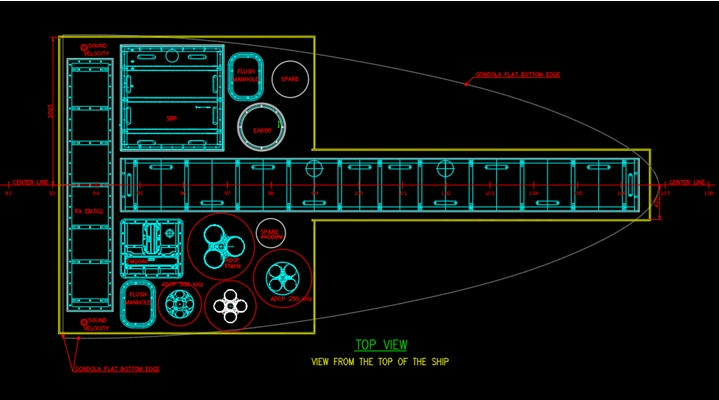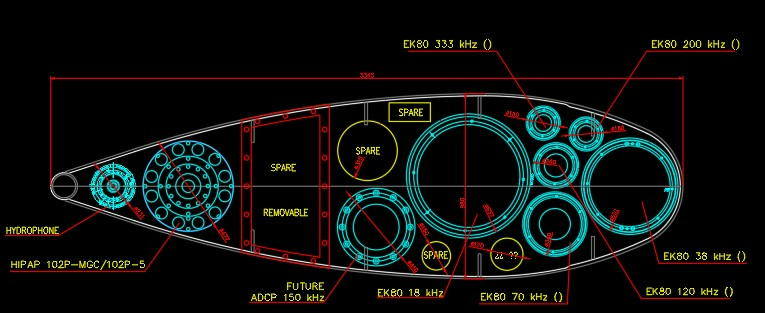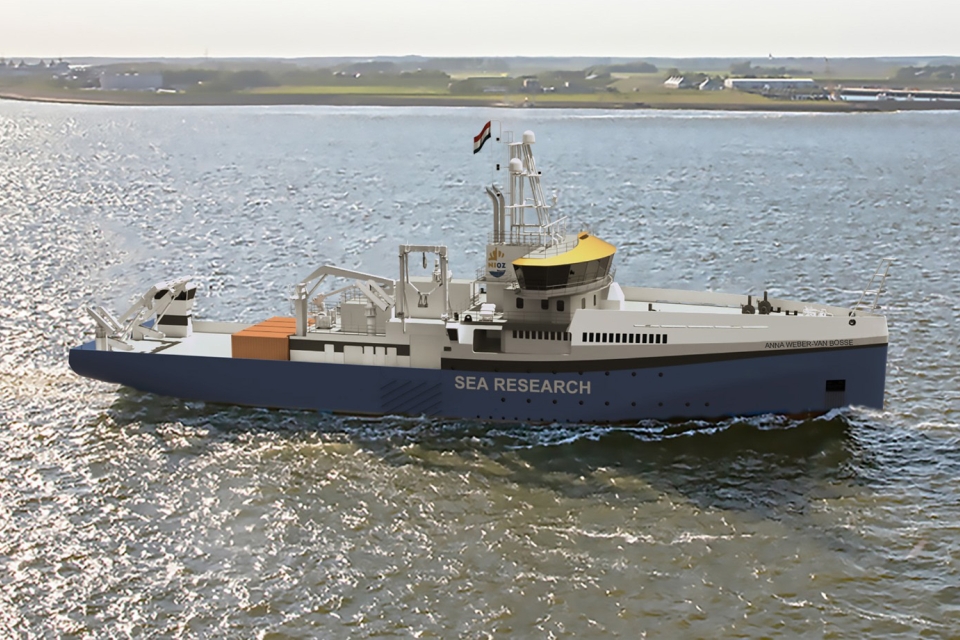Research Vessel Anna Weber-van Bosse will eventually replace the NIOZ’ current research vessel, RV Pelagia. The new vessel will be designed for extreme flexibility to facilitate a wide range of marine research.
This article has been written and provided by the Netherlands Institute for Sea Research (NIOZ).
Prof. Gert-Jan Reichart serves as the scientific coordinator for the new construction project. ‘With this new flagship, the Netherlands will once again be able to compete with the rest of the world in the field of marine research.’
Following a European tender procedure, the contract for the construction of the new vessel was awarded to the Spanish shipbuilder Astilleros Armon in December 2022. Construction is expected to begin this autumn. The RV Anna Weber-van Bosse will be 80 metres long and 17 metres at the beam, with a maximum draught of 5 metres to operate from its home port of Texel. The vessel is designed for use in all of the world’s oceans.
Reichart: ‘Starting from the second half of 2025, the Anna Weber must be ready for operations around the world to conduct any type of marine research, from pole to pole.’
Also read: Construction of RV Anna Weber-van Bosse ready for kick-off
Suitable for every type of research
With a crew of max. sixteen, the vessel will also offer room for up to 31 passengers. To make the vessel suitable for every imaginable type of research, it will be equipped with flexible-use cabins and spaces. Up to twelve sea containers with laboratory equipment will fit on the deck and in the hold.
‘The goal is to be able to carry precisely the equipment needed for the specific, and often unique scientific projects conducted on each expedition,’ Reichart explains. ‘The work can range from taking DNA samples to controlling submersible drones or measuring the chemical composition of sea water.’
Also read: Spanish shipyard to build new NIOZ research flagship Anna Weber-van Bosse
Deck frames to lower equipment into the water
The Anna Weber will be equipped with the latest types of deep-sea winches and A-frames to lower instruments for research and sampling into the water.
‘The new deck equipment and piston corer will make it possible to take sediment core samples of up to 30 metres,’ says Reichart. ‘The A-frame on the aft deck will also be able to lift heavy items, like autonomous drilling equipment that we can borrow from the European equipment pool.’
Most research instruments will be lowered into the water from the A-frame on the port/starboard deck, to take samples from the sea water or ocean floor.
Reichart: ‘This is where the multicorer, box corer and piston corer will all be placed on deck. We can also put out landers for research on the ocean floor from the port/starboard deck. The more spacious dimensions will also make it possible to use the clean CTD for expeditions using the piston corer, which is not possible today aboard the Pelagia.’
The CTD frame will be installed on the port side, to measure electrical conductivity, temperature and depth and to take water samples.
Reichart: ‘This winch will also be equipped with an active heave compensator, to compensate for rapid vessel movements by quickly feeding or reeling in the line. That will also make it possible to take measurements and samples in heavy seas.’
Also read: What makes the new research vessel Wim Wolff sustainable?
Acoustic sensors for depth measurements
Not all of the state-of-the-art instruments aboard the Anna Weber-van Bosse will be installed on deck. Some of the most advanced acoustic sensors for a wide range of oceanic research will actually be installed in the hull.
Reichart: ‘With two multibeam echo sounding systems, we’ll be able to map out both shallow seas and the deepest oceans. Both systems were developed to limit the harm to sea mammals from working with intensive sonar pulses.’
A single-beam echo sounder will also be installed on board. Reichart: ‘That will be suitable for measuring the depth from the continental plate to the deepest parts of the open ocean.’
A parametric echo sounder will also be fitted to map out sediment layers under the sea bed, to depths of tens, or even hundreds of metres. The instrument is suitable for water depths varying from the continental plate to the deep ocean.
Some of the acoustic instruments will be installed in the drop keel, and some will be built in to the forwards gondola.

‘The retractable drop keel can be lowered up to 3 metres below the vessel, so that the sensors installed there will not be disrupted by any air bubbles moving under the hull,’ states Reichart. ‘All of the sensors will be integrated into the network, and the data they produce can be read at several places aboard the vessel.’
Also read: Dutch maritime industry outraged that Spanish yard will build new NIOZ ship
From current speed and gas bubbles to fish and plankton
Other acoustic measurement systems will be used to study the sea water itself. For example, the four acoustic doppler current profilers (ADCPs) will measure the speed of the current under the Netherlands’ new research fleet flagship.
‘Each of the four ADCPs are designed for a specific environment,’ explains Reichart. ‘From the coast to the open ocean. To meet those requirements, each of the ADCPs uses its own individual frequency.’
The RV Anna Weber-van Bosse will also be able to observe objects in the water column using a broadband multi-frequency scientific split-beam echo sounder. Reichart: ‘That’s invaluable for monitoring fish and plankton populations, for example, but also for finding bubbles of methane gas. This will allow the Anna Weber to make a major contribution to the Netherlands’ research on climate and biodiversity.’

Preparations for the construction of a sustainable ship
The shipyard Astilleros Armon in Spain has been working on completing the basic design for the multifaceted research vessel and on purchasing building materials since last February. MARIN in Wageningen has already conducted a variety of tests to predict the design’s sea handling under different wave heights and directions. Construction is expected to begin after the summer holidays.
Also read: New modular AUV for Dutch marine research community








